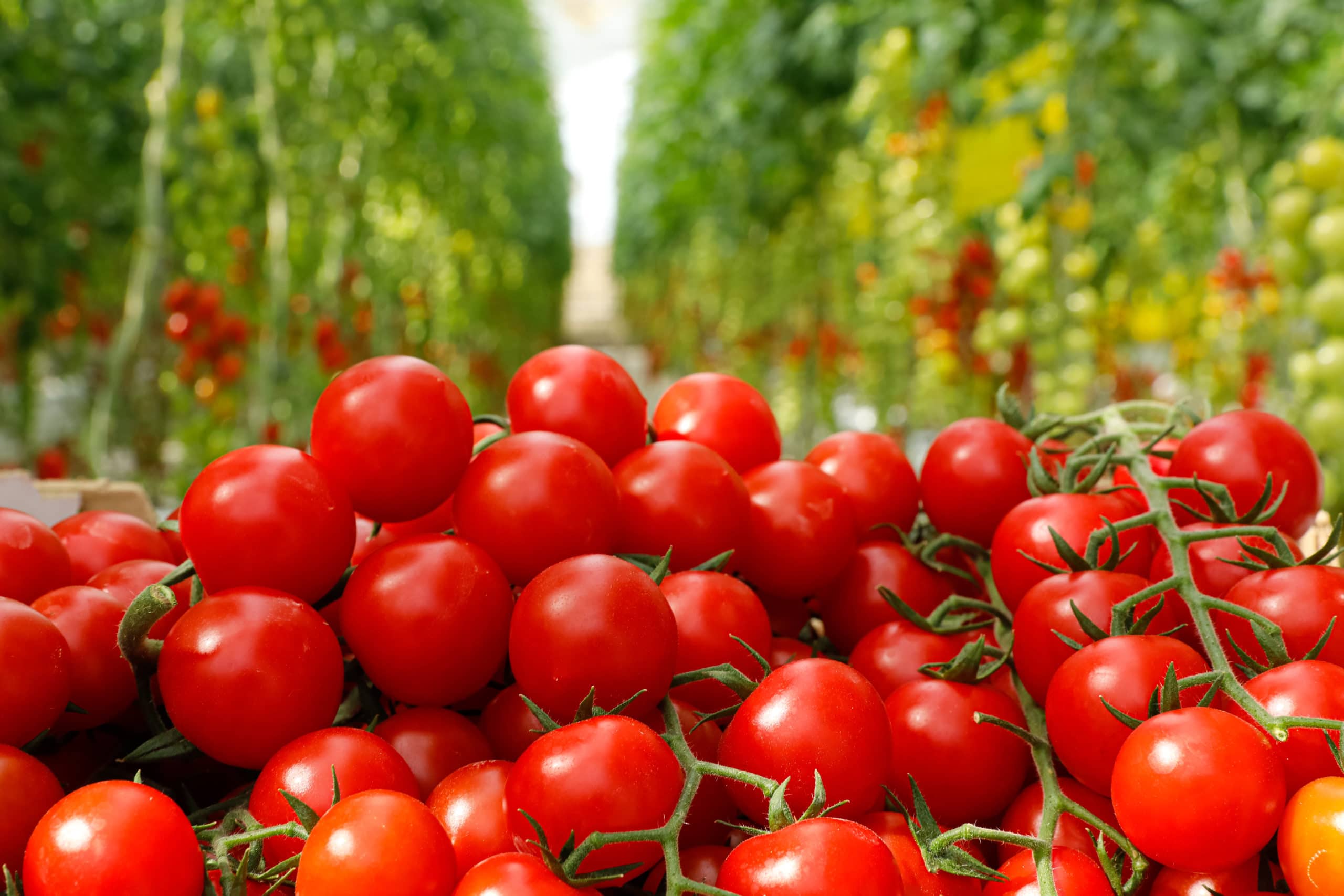Tomato seedlings go through numerous phases of development before being transplanted into a garden or larger container.
Understanding these stages can assist you in providing the greatest care for your seedlings and ensuring that they grow into healthy plants.
A Comprehensive Guide on Tomato Growth Stages
The Growth Stages of a Tomato Plant
Throughout its life cycle, the tomato plant goes through various stages. Germination, seedling development, vegetative growth, flowering and fruiting, and maturing are all examples. Understanding these stages might assist you in providing the best care for your plants and ensuring a plentiful yield.
Understanding these stages might assist you in providing the best care for your plants and ensuring a plentiful yield.
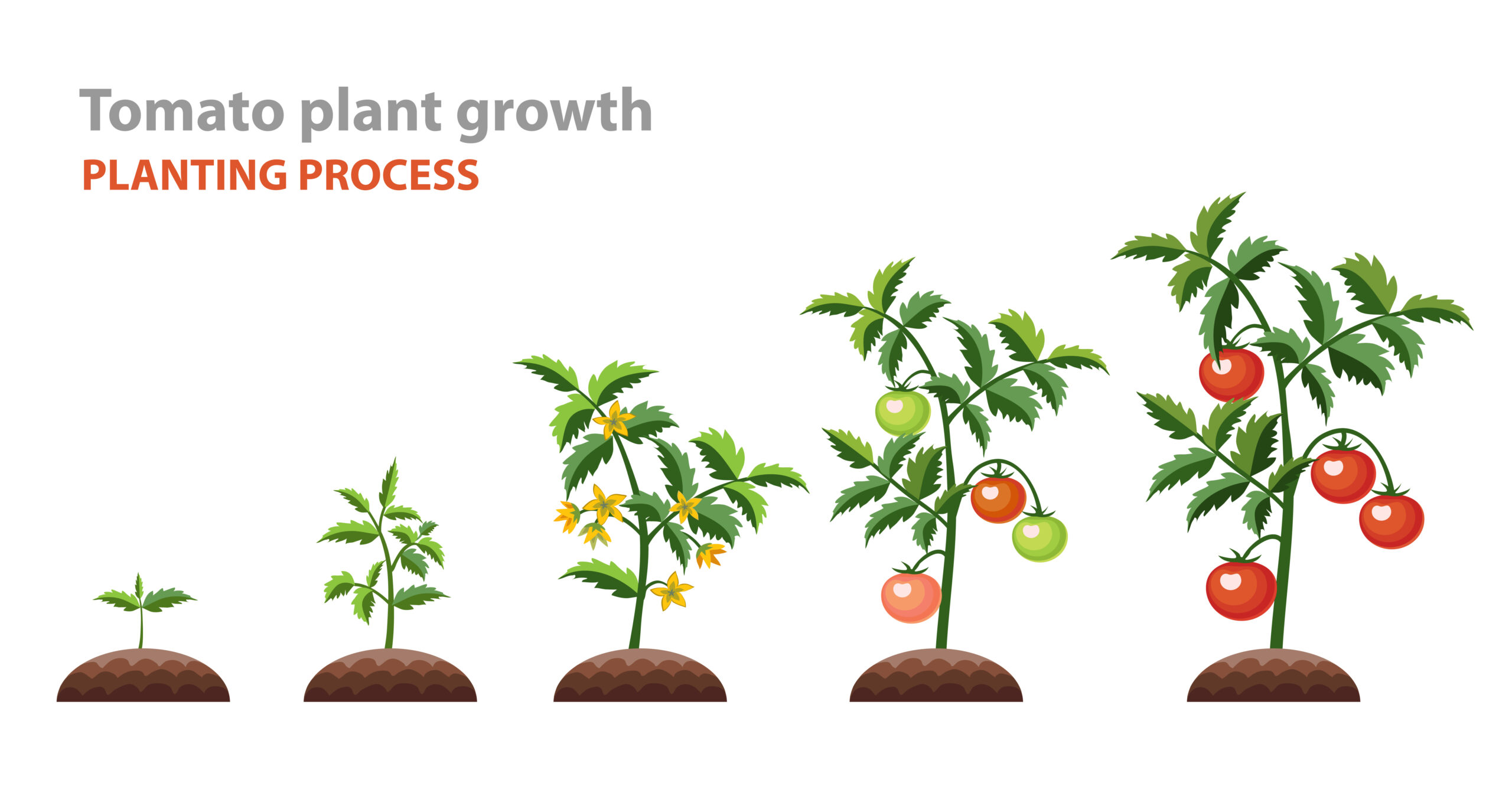
Germination
A tomato seedling’s first stage of growth is germination. The seed absorbs water and begins to sprout at this stage.
Seed varieties
Tomato seeds are classified into two types: hybrid and heritage.
Crossbreeding two different tomato varieties produces hybrid seeds, which can result in plants with desirable features such as disease resistance or high yields.
Heirloom seeds, on the other hand, are open-pollinated and passed down through generations, producing plants that are true to the original plant.
Selecting the Best Seeds
When selecting tomato seeds, consider the qualities of the variety you’re interested in.
Some tomatoes are determinate, meaning they produce a specific number of fruits before dying, whilst others are indeterminate, meaning they produce fruit throughout the growing season.
You should also examine the fruit’s size and colour, as well as the plant’s disease resistance.
Immersion in Water
Soaking tomato seeds in water can help soften the seed coat and enhance germination rates.
Place the seeds in a dish of warm water and soak them for 24 hours. This makes it easier for the seed to absorb water and sprout.
Following the soaking of the seeds, they can be planted in seed trays or pots filled with seed compost.
Cover the seeds with compost or vermiculite and water thoroughly.
Place the tray or pots in a propagator or a plastic bag in a warm location, such as a windowsill or heated propagator.
The optimal temperature for germination is between 70 and 75 degrees Fahrenheit (21 and 24 degrees Celsius).
Water well your Newly Planted Tomatoes.
This is to make sure the soil is moist and ideal for growing.
Early in the growing season, water the plants daily in the morning.
You might need to water tomato plants twice a day as temperatures increase.
Garden tomatoes typically require 1-2 inches of water a week.
The Four Stages of a Tomato Plant
The growth stages of a tomato plant are divided into the following four phases:
- Young seedling (1 month old),
- Vegetative growth (2 months old),
- Flowering (3 months old) and
- Fruiting (4 months old).
Time for Germination
Tomato seed germination times vary based on the variety and the conditions under which they are developed.
It usually takes 7-14 days for tomato seeds to germinate. Check the seeds by lightly pressing on the compost or vermiculite to see if they have sprouted.
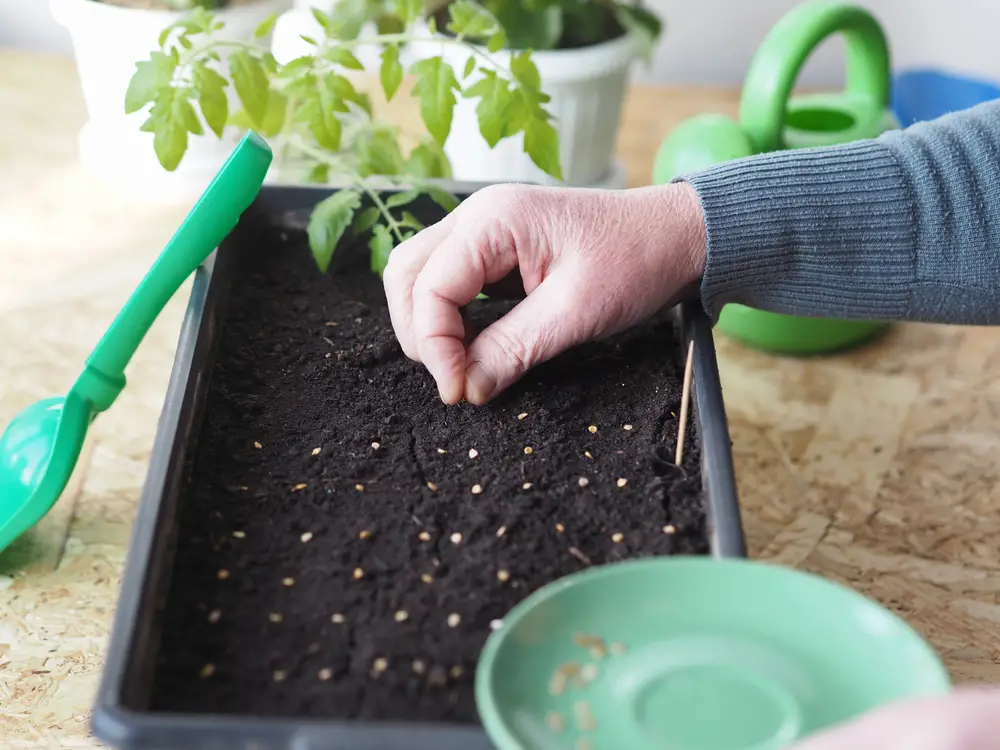
Enhancing the Germination Process
If you’re having difficulties getting your tomato seeds to germinate, there are a few things you may try.
A heating pad can supply bottom heat to seed trays or pots.
You can also try using a seed compost designed exclusively for tomatoes, which can give the optimum conditions for germination.
Finally, maintain the seed trays or pots well-watered but not flooded.
Seedling Development
The tomato seedlings enter the seedling development stage after germinating.
The seedlings begin to grow and develop into adult plants at this stage.
Cotyledons
Cotyledons are the first leaves to develop from the seed.
These leaves are typically round and meaty, providing the seedling with the energy it requires to thrive. They will emerge soon after germination.
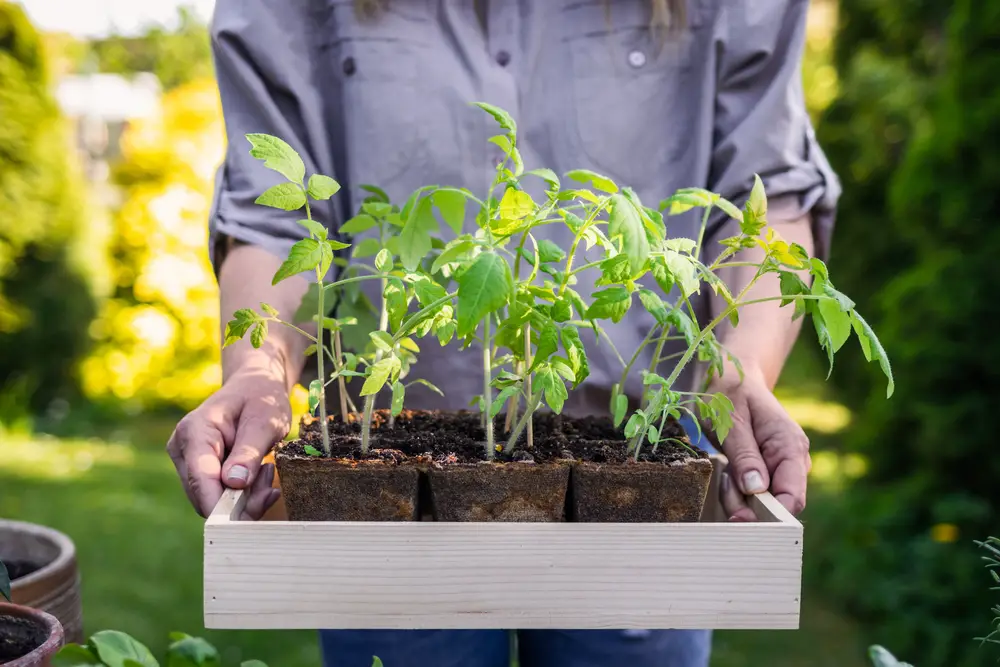
Genuine Leaves
The seedling will begin to produce genuine leaves after the cotyledons have emerged.
These leaves will differ from the cotyledons in appearance and will be the adult plant’s leaves.
The Root System
The seedling will build a root system as it grows.
The roots will take water and nutrients from the soil that the seedling will require for growth.
It is critical to maintaining the soil continuously moist but not waterlogged so that the roots can absorb the necessary water.
Thickening of The Stem
The stem of the seedling will begin to thicken as it grows. This indicates that the seedling is maturing and ready to be moved into a larger container or garden.
Planting
The seedlings can be transferred into the garden or larger containers after they have grown robust enough. Choose a sunny spot with well-draining soil, and space the seedlings 18-24 inches apart.
Tomatoes Love the Sunshine.
A position in full sun means an average of at least eight hours a day.
This gives the best results in most areas, though if you’re in a hot climate, you can get away with dappled shade.
Sprouting
The seedlings will sprout new leaves and thrive more vigorously after transplanting.
This indicates that the seedling has established itself well in its new habitat.
The Creation of The First Genuine Leaf
The seedlings will begin to grow their first genuine leaves after sprouting.
These leaves will be different from the cotyledons and will be the mature plant’s leaves.
The Creation of The Third True Leaf
After the seedlings have formed their first real leaves, they will begin to form their third true leaves.
The seedlings will be more grown and robust at this point, and they will be ready to move on to the next stage of growth, the vegetative growth stage.
Understanding the many phases of tomato seedling development allows you to offer the necessary care to ensure healthy growth and a plentiful crop.
It’s also critical to be aware of any problems or indicators of stress and to address them as soon as possible.
Your tomato seedlings will grow into strong and prolific plants if you give them the proper care.
Transplanting
Transplanting is shifting seedlings from seed trays or pots to a larger container or into the garden.
This is a critical step in the development of tomato seedlings because it permits them to grow and develop into mature plants.
Seedling Transplanting
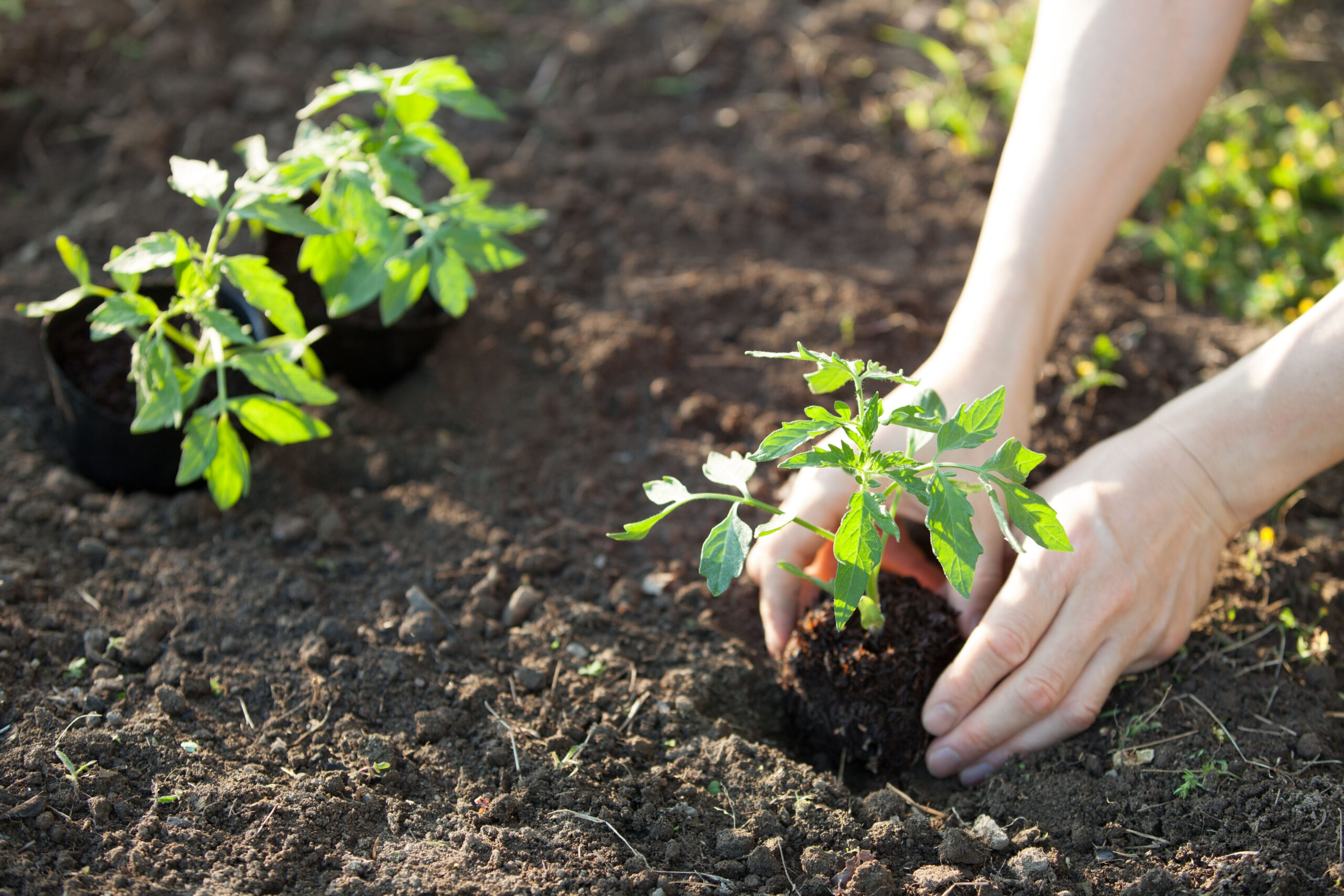
When transplanting seedlings, select a sunny spot with well-draining soil.
Seedlings should be spaced about 18-24 inches apart to allow for proper growth and development.
Water the seedlings thoroughly before removing them from the seed tray or container, being cautious not to damage the roots.
Take Precautions During Transplantation
The seedlings will require extra attention after transplantation to ensure they establish themselves in their new surroundings.
This entails maintaining the soil constantly moist but not saturated and supplying appropriate sunlight and nutrients to the seedlings.
When transferring seedlings into the garden, it’s also a good idea to provide them some support, such as a cage or pole, to help them stay upright as they grow.
Days till Maturity
Tomato plants mature at different rates depending on the variety.
Determinate types normally mature in 60-90 days or less, whereas indeterminate kinds might take up to 120 days or more.
It’s critical to check the seed packet or plant tag for the variety’s particular days to maturity.
Remember that this is only an estimate that can be influenced by factors like as weather and growing circumstances.
Transplanting is an important step in the growth of tomato seedlings; be careful and provide the seedlings with the proper care throughout this procedure. Your seedlings will establish themselves and grow into healthy, prolific plants ready to give fruit if you provide the proper circumstances and care.
Maturity
Tomato seedlings enter the vegetative development stage after transplanting.
The plant will concentrate on growing leaves, stems, and roots rather than flowers and fruit during this period.
The vegetative stage is critical for the plant’s overall growth and health.
Growth of Vegetation
The plant will grow taller and bushier during the vegetative stage as it creates more leaves, stems, and roots.
It is critical to feed the plant with enough sunlight, water, and nutrients to maintain good growth during this stage.
Staking or caging the plant can also assist support it and keep it upright as it grows.
Flowering
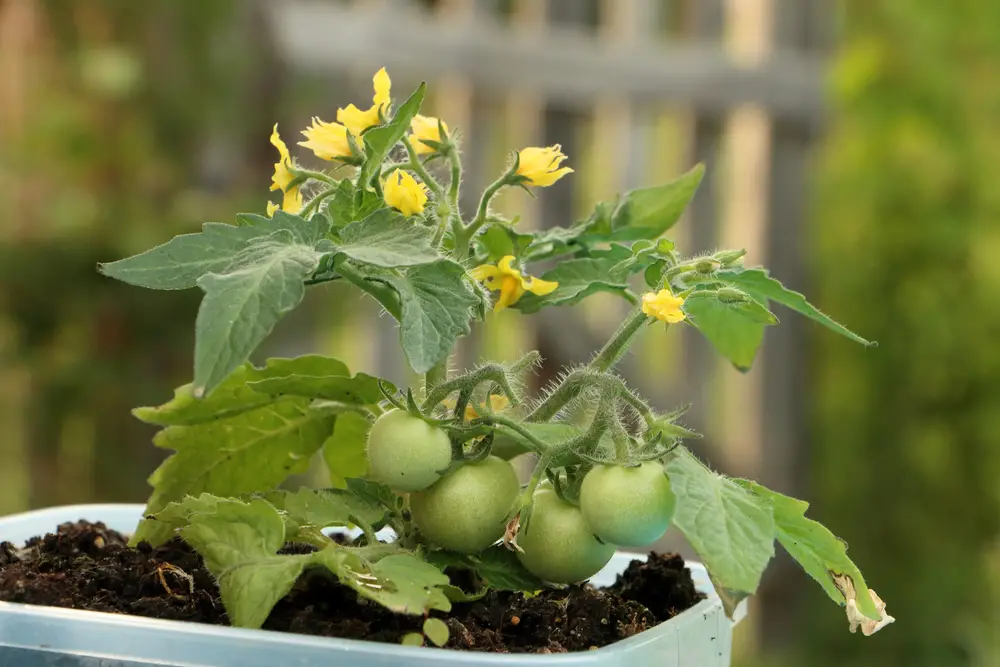
The plant will begin to generate flowers after the vegetative stage.
Flowers are the tomato plant’s reproductive organs and are required for fruit formation.
The flowers are often white or yellow and produced in clusters.
Pollination
Pollination is required for the blooms to mature into fruit.
Tomato plants are self-pollinating, which means the blossoms can pollinate themselves, but they can also benefit from bee or other insect pollination.
Growth of Fruit
The blossoms will turn into fruit after pollination.
Tomatoes are berries and will continue to grow and mature as the plant grows.
Feeding the plant with enough water, sunlight, and nutrients at this stage is critical to guarantee healthy fruit development.
Fruiting Maturity
The colour of the fruit will shift from green to crimson as it matures (or other colours depending on the variety). When the fruit has reached maturity, it is ready to be picked.
Harvesting Tomatoes
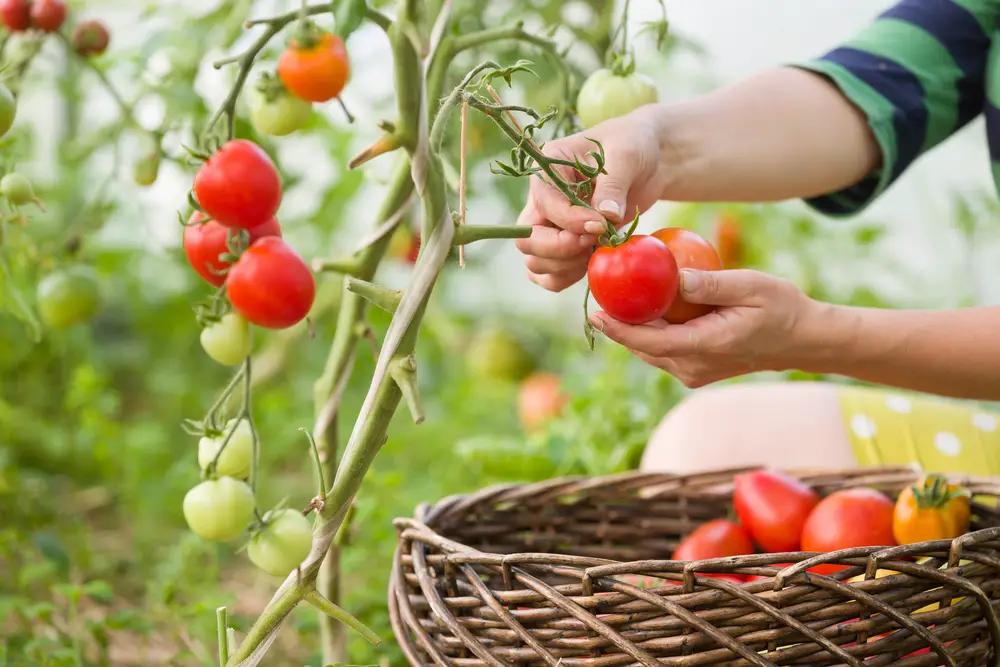
Tomatoes can be harvested by carefully twisting them off the plant.
Tomatoes are best harvested when they are fully ripe yet still firm. If a tomato is left on the vine for too long, it will ripen and deteriorate.
Overripe tomatoes can still be cooked, although they will be less tasty than ripe tomatoes.
Senescence
After the plant’s fruiting cycle is complete, it will begin to senesce, which is the process of ageing and dying.
The leaves will turn yellow, and the plant will stop growing new leaves.
At this point, the plant can be removed and disposed of or left in place to degrade and contribute organic matter to the soil.
Tomato Planting from Seeds
Soil Prerequisites
Tomato plants need well-draining soil with a pH of 6.0 to 6.8.
Because tomatoes are heavy feeders and require a lot of nutrients to flourish, the soil should be rich in organic matter.
If the soil is deficient in nutrients, it is critical to modify it with compost or other organic matter before planting.
Soil Specifications
Tomatoes prefer well-drained soil with a pH between 6.0 and 6.8.
They also require adequate nutrients and consistent moisture.
A high organic matter content soil is great for tomatoes because it retains moisture and provides necessary nutrients.
If your soil is heavy clay or sandy, organic substances like as compost or peat moss may be required to improve its structure and fertility.
Temperature Specifications
Tomatoes love temperatures ranging from 70 to 85 degrees Fahrenheit (21 to 29 degrees Celsius).
They are not frost resistant and should not be planted outside until the threat of frost has passed.
If the temperature gets too high, above 90°F (32°C), the plant’s growth will slow down, and the fruit may not mature properly.
Mulches and Fertilizers
Tomatoes require a steady supply of nutrients in order to grow and produce fruit.
A balanced fertilizer should be used at planting and then every 4-6 weeks during the growing season.
A mulch layer of straw or grass clippings can also be put around the plant’s base to assist conserve moisture and control weeds.
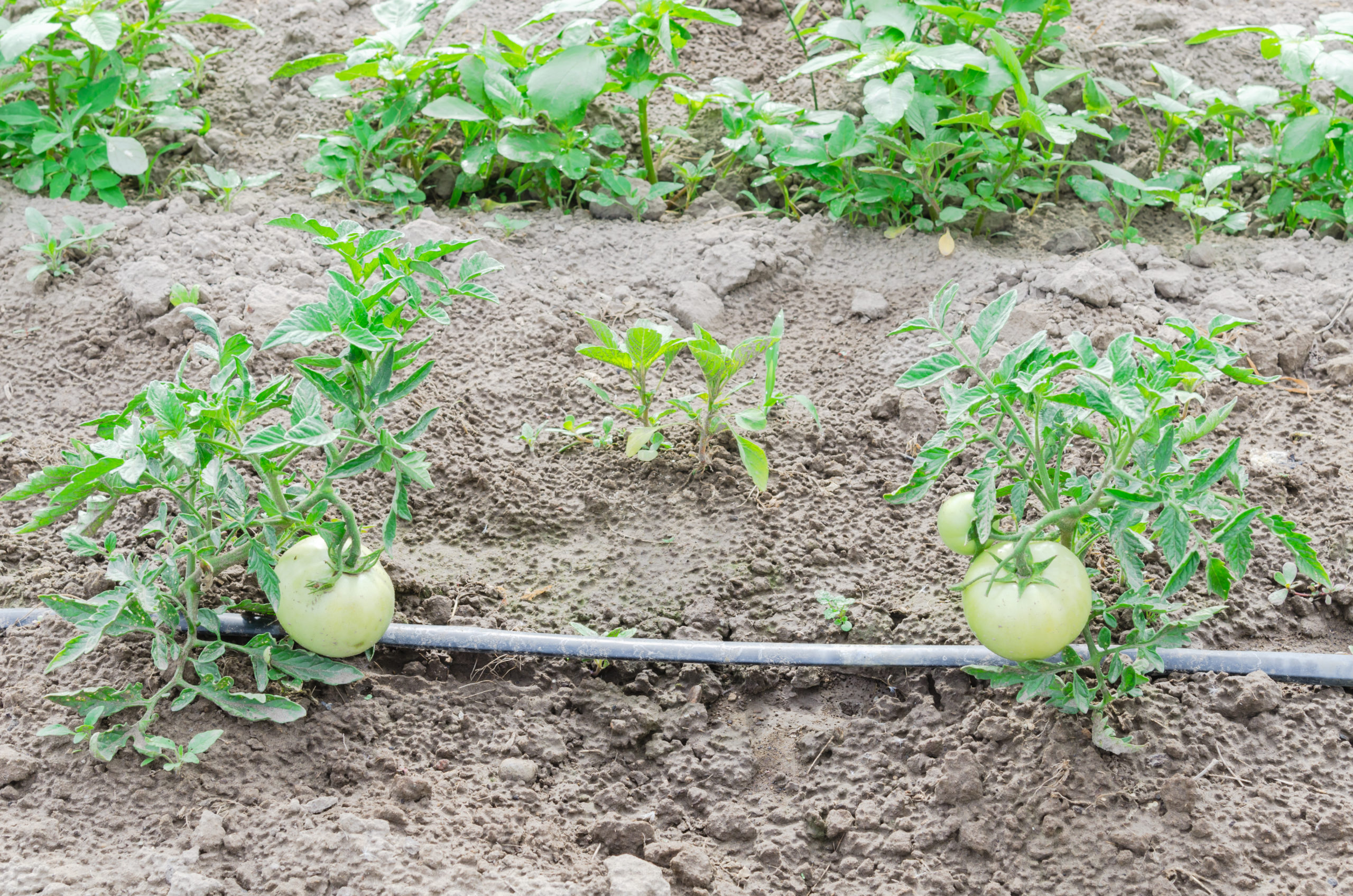
Planting Tomato Plants
Caring for tomato plants entails providing them with optimal growing conditions, such as appropriate sunlight, water, and nutrients.
It’s also critical to be on the lookout for pests and diseases and to deal with them as soon as possible.
Staking or caging the plant can also to support and keep it upright as it grows.
Growth stages measured in days, weeks, months
Germination 7-14 2-3 0-0.5
Seedling Development 2-3 0-0.5
Vegetative Growth 2-3
Flowering and Fruiting 2-3
Ripening 1-2
Please remember that these are only estimates and may vary based on the variety and growing circumstances.
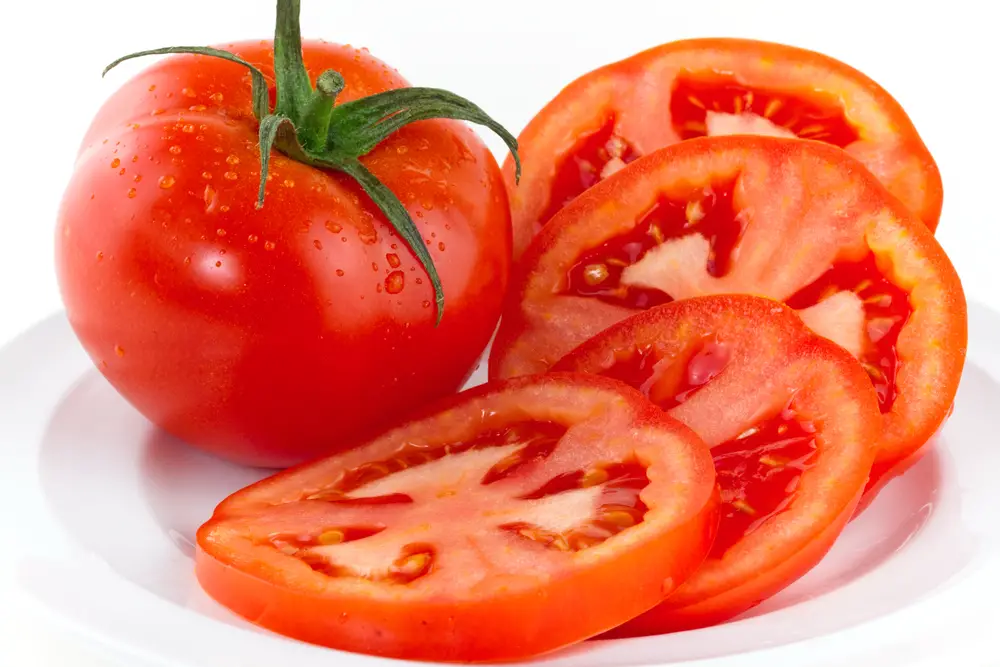
Issues That May Arise While Producing Tomatoes from Seed
- Poor germination, seedling damping-off, a lack of sunlight, and over or under-watering are all frequent issues when growing tomatoes from seeds.
- Pests and diseases such as tomato hornworm, early blight, and verticillium wilt can also impact plant growth and development.
You can guarantee that your tomato seedlings grow into healthy and productive plants by identifying these challenges and taking steps to prevent or remedy them.
To summarize, growing tomatoes from seed is a pleasurable process that can result in robust, prolific plants.
Understanding the many stages of development, from germination to senescence, is critical for giving the best care and achieving the best results.
It is critical to select the appropriate seeds, offer proper soil, temperature, water, and nutrition, and look out for pests and diseases.
Transplanting seedlings and caring for older plants are equally important aspects of tomato plant growth and development.
By following these guidelines and giving proper care, you can ensure that your tomato seedlings develop into healthy, prolific plants that yield an abundant harvest.
Read More:
Discover the 6 Stages of Onion Growth and Get a Bumper Harvest!

